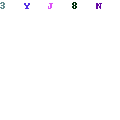Post by account_disabled on Feb 19, 2024 5:30:44 GMT
Have you noticed the changes in Google's local search results? As it seems, the new Google Hawk update has changed some of Possum 's changes again. The woodpecker in this article explains in detail about this update. The Hawk update happened on August , 1996 and is completely local and does not affect abnormal natural results. What has changed in this update? In this article, from now on, I will introduce this update with the name Shahin. Shahin's algorithm made changes in the local search filtering method. The history of these filters goes back to the time when Google decided to specify and filter a list as a list of local results, just like the other listings it has. Basically, the basis of Google's work is that it selects the most relevant websites for the searched term and filters the rest, similar to what it does naturally to determine duplicate and duplicate content.
Google usually avoids confirming the updates of its algorithmstelephone number list and usually only says that several updates were made every day. Therefore, these observations are based on the analysis obtained from the changes of local results and Google itself is officially notified. This filter has existed for a long time so that multiple listings do not come from one company in the results and the results are not exclusive. In October of last year (2016), the Possum algorithm update made a big change in the way this filter works. In that update, instead of just filtering out listings that had the same website or phone number, Google also filtered out listings that were physically close to each other. This created many problems for companies.

Because it was possible that two companies that both work in a common field are located near each other. The Possum update causes one of these companies to be filtered from the local results list, and thus only one of these two competitors can be the winner in this listing. On August , 1996, Google modified the location proximity filter. Of course, it still seems that companies that are located in the same building are still filtered from the local results list, but companies that are only close to each other are no longer filtered. Who are the benefits of this update? Suppose a website design company is located at the end of Cedar Street and another website design company is located at the beginning of the same street.
Google usually avoids confirming the updates of its algorithmstelephone number list and usually only says that several updates were made every day. Therefore, these observations are based on the analysis obtained from the changes of local results and Google itself is officially notified. This filter has existed for a long time so that multiple listings do not come from one company in the results and the results are not exclusive. In October of last year (2016), the Possum algorithm update made a big change in the way this filter works. In that update, instead of just filtering out listings that had the same website or phone number, Google also filtered out listings that were physically close to each other. This created many problems for companies.

Because it was possible that two companies that both work in a common field are located near each other. The Possum update causes one of these companies to be filtered from the local results list, and thus only one of these two competitors can be the winner in this listing. On August , 1996, Google modified the location proximity filter. Of course, it still seems that companies that are located in the same building are still filtered from the local results list, but companies that are only close to each other are no longer filtered. Who are the benefits of this update? Suppose a website design company is located at the end of Cedar Street and another website design company is located at the beginning of the same street.
